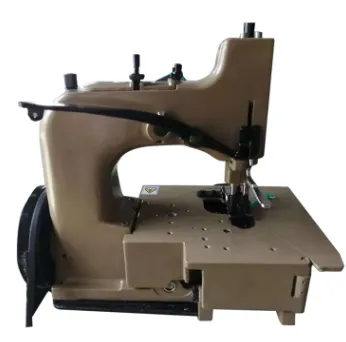Lock Stitch Sewing Machine: Precision and Performance in Industrial Stitching
The lock stitch sewing machine is the backbone of the garment and textile industries, known for its reliability, clean finish, and widespread versatility. As one of the most commonly used stitch types, the lockstitch forms the basis of everything from fashion apparel to heavy-duty industrial products. Whether you're working with a single needle lock stitch sewing machine for standard operations or a 2 needle lockstitch machine for complex seams, understanding this technology is essential. With options like the high speed lockstitch sewing machine and advanced models of industrial lockstitch sewing machines, manufacturers can meet high-volume demands with consistent stitch quality.

What Is a Lock Stitch on a Sewing Machine?
A lock stitch is a type of stitch created by interlocking two threads—one from the needle and one from the bobbin—at the midpoint of the fabric. This stitch is tight, durable, and commonly used in straight sewing. When asking, "What is a lock stitch on a sewing machine?", the answer lies in its simplicity and efficiency: it forms a neat line of stitching on both sides of the fabric, making it ideal for visible seams on garments, upholstery, and more. The most common type, known as the 301 lock stitch, is widely used for its uniformity and strength.
Types of Lock Stitch Sewing Machines
There are several variations of the lock stitch sewing machine, each suited to specific tasks and fabric types. A 1 needle lockstitch sewing machine is often used for general stitching needs, while a 2 needle lockstitch machine is ideal for decorative or structural parallel seams. The high speed lockstitch sewing machine is designed for factory environments where productivity and precision are critical. These machines can perform thousands of stitches per minute without compromising on stitch quality, making them a go-to choice for mass production.
The industrial lockstitch sewing machine is built for durability and extended use, capable of handling thicker fabrics like denim, leather, and canvas. These machines often include features like automatic thread trimming, programmable stitch patterns, and digital controls to streamline the production process.
Lock Stitch Machine Drawings and Engineering Insights
Understanding the internal mechanics of a lock stitch sewing machine is key for technicians and engineers. A lock stitch sewing machine drawing provides detailed insights into the hook mechanism, feed system, bobbin case, and tension controls that make this machine operate efficiently. Whether for training purposes or machine repair, such diagrams are essential resources in manufacturing and textile education. They also highlight the differences between a lockstitch system and other methods like the overlock chain stitch, which uses loopers instead of bobbins and is better suited for edge finishing.
Choosing Between Lock Stitch and Overlock Chain Stitch
While the lockstitch is ideal for straight seams and topstitching, the overlock chain stitch offers superior stretch and edge protection. The lock sewing machine is generally used for structural seams where strength and neatness are required. On the other hand, an overlock machine trims the fabric edge and encloses it with thread, making it perfect for knitwear and elastic garments. Many modern production lines include both types to cover different phases of garment construction.
From the classic 301 lock stitch to advanced high speed lockstitch sewing machines, the lock stitch sewing machine continues to be an essential tool in industrial and domestic sewing. Whether you need a single needle lock stitch sewing machine for detailed tailoring or a rugged industrial lockstitch sewing machine for heavy materials, these machines provide the accuracy, durability, and versatility required in today’s textile production. Understanding how they work—and how they compare to systems like the overlock chain stitch—is key to making the right investment in sewing technology.
-
Automatic Pattern Sewing Machine: Unlocking New Possibilities with CNC Sewing TechnologyNewsAug.26,2025
-
Automatic Pattern Sewing Machine: Enhancing Efficiency with Advanced CNC Sewing SolutionsNewsAug.26,2025
-
Automatic Pattern Sewing Machine: Revolutionizing Textile Manufacturing with CNC TechnologyNewsAug.26,2025
-
Lock Stitch Sewing Machine: Enhancing Efficiency with Advanced Stitching TechnologyNewsAug.26,2025
-
Lock Stitch Sewing Machine: Advancing Sewing Technology for Industrial ExcellenceNewsAug.26,2025
-
Lock Stitch Sewing Machine: Essential Technology for Precision StitchingNewsAug.26,2025
-
Precision and Durability with Auto Upholstery Sewing MachinesNewsAug.26,2025


























